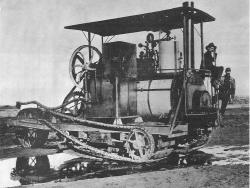The third bridge built on the same site to carry railroad tracks across the Susquehanna River just north of Harrisburg, Pennsylvania, the Rockville Stone Arch Bridge, at 3,820 feet long and 52 feet wide, is believed to be the longest and widest stone-arch railroad bridge in the world. A central link in rail travel between New York City and Pittsburgh, the Rockville Stone Arch Bridge accommodates four lines of railroad tracks, today serving both the Norfolk Southern and Amtrak lines.
USA
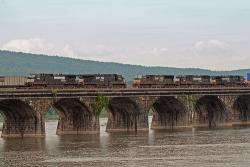
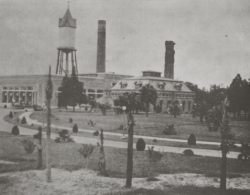
Installed alongside an Epping Carpenter pump that was later scrapped, this water pump was built by Allis-Chalmers, which for many years had Edwin Reynolds as its chief engineer. Driven by a Corliss steam engine, these large city water pumps were installed in Jacksonville's water supply improvement program in 1915, and each pumped 5 million gallons of water a day until 1930 when the first of the electric-driven peripheral pumping stations began operating. Steam engine operation was discontinued in 1956.
Old Plant in Foreground - Landmark Reynolds-corliss Engine and
Allis Chalmers Pump Located in the Building in the Background.
View Looking North From Hogan's CreekEra_date_from: 1917

Alvord Lake Bridge, along with many of Ernest Ransome's reinforced concrete buildings, survived the 1906 San Francisco earthquake and several subsequent tremblers with no damage. Built in 1889 by Ernest L Ransome of New York, this reinforced concrete arch bridge in San Francisco's Golden Gate Park is believed to be the oldest concrete bridge in the United States that used steel reinforcing bars to improve the behavior of the concrete. The reinforcement consists of a series of square cold-twisted steel reinforcing bars, an invention of Ransome.
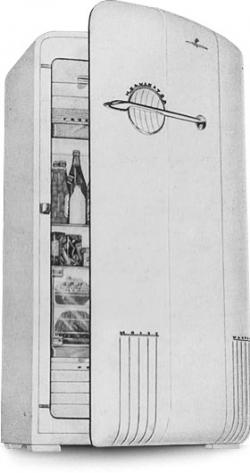
This collection includes many examples of advances in mechanical refrigeration for residential and commercial applications, dating from about 1890 to 1960. Such devices dramatically improved food storage safety and convenience and set high standards for mechanical reliability. The RRM collection contains products of such pioneers in the refrigeration industry as Frigidaire, Philco, Sunbeam, and Tecumseh. An archive is available to help researchers trace the history of the refrigeration industry.
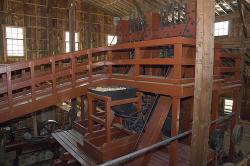
The first authenticated discovery of gold in the U.S. occurred on the Cabarrus County farm of John Reed in 1799, sparking the nation's first gold rush. During its peak years, more than a million dollars of gold was recovered a year, making North Carolina a leader in gold production until 1848. This mill, built by the Mecklenburg Iron Works of Charlotte, North Carolina, is original except for the timber work. Two groups of five 750-pound stamps with 5- to 7-inch lift, rose and fell thirty-five times a minute to yield a finely crushed ore.
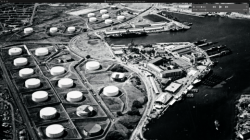
Conceived in the early years of World War II as a plan to bury four fuel containers horizontally in a hillside at the U.S. Navy facility at Pearl Harbor, Hawaii, the Red Hill Underground Fuel Storage Facility ultimately encompassed the design and construction of 20 vertical storage tanks - each large enough to contain a 20-story building - buried in the volcanic hillside and connected by tunnels to a harbor-side pumping station more than two-and-a-half miles away.
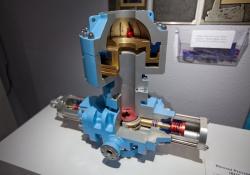
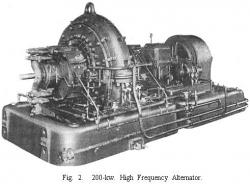

When opened in 1909, the Queensboro Bridge had the two longest steel cantilever spans in the world - 1,182 feet from Manhattan to Blackwell's Island and 984 feet from Blackwell's Island to Queens. These would remain the world's longest cantilever spans until the completion of the Quebec Bridge in 1917. The Queensboro Bridge has an overall length of 3,724.5 feet. It originally carried two elevated railway lines, two trolley lines, six carriage lanes and two pedestrian walkways.
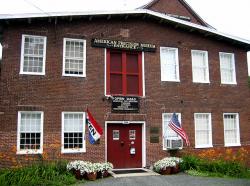
Innovations

This Federal Laboratory has played a pivotal role in creating our modern air traffic control system. Established as the National Aviation Facilities Experimental Center in 1958, the Technical Center’s research and engineering achievements, and its direct support to airports and FAA…
Read More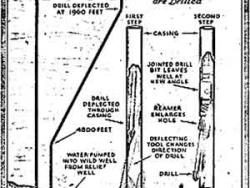
H. John Eastman introduces controlled directional drilling in 1929 and was awarded a patent the following year.
The technique became widely adopted after an oil strike in Conroe, Texas, caught fire in January 1933. The well exploded, creating a 600-foot deep crater, and the oil burned…
Read More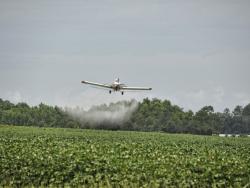
Agricultural Aviation Began In 1921 When C. R. Neillie Got A Military Plane To Dust Catalpa Trees Near Troy, OH. In 1922 B. R. Coad And C. E. Wollman Began Research At Tallulah, LA To Control Boll Weevils In Cotton. They Developed Equipment Using Venturi Induction, Ram Air Pressure And…
Read More
American Society of Agricultural Engineers Founded in this Building December 27, 1907
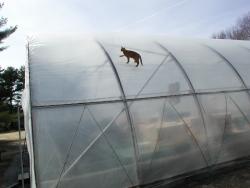
A crucial step in the evolution of modern plant agriculture was the development of low-cost, energy-efficient greenhouse structures that provide optimum growing conditions year-round. In 1964, Professor William J. Roberts developed the first air-inflated double-layer polyethylene…
Read More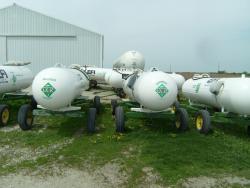
In 1932, J. O. Smith, Agricultural Engineer at Delta Branch Experiment Station in Stoneville, MS, attached a small anhydrous ammonia cylinder to a plow in such a manner that the NH3 was released in the soil. The plow, a Georgia Stock, was pulled by a gray mule named Ike. This was the…
Read More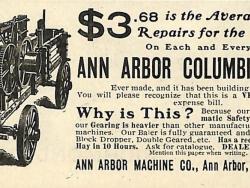
Designated an Historic Landmark of Agricultural Engineering. In the Shelbyville Area During the Spring of 1929, Raymore McDonald Designed and Developed the First Commercial Pick-Up Baler as Conceived and Financed by Horace Tallman and His Sons, Leslie R. and Gentry L. These Balers were…
Read More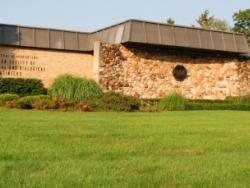
Established in 1907, the American Society of Agricultural Engineers (ASAE) was managed by volunteers. In 1925, local editor Raymond Olney was named secretary, thus establishing ASAE in this area. By 1969, with over 7,000 members in 100 countries, an ASAE building was constructed at this…
Read More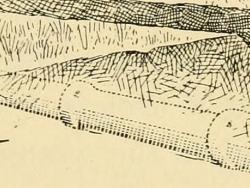
Farm And Residence of John Johnston 1791 - 1880 Eminent Farmer Who Here Originated Tile Underdrainage in America in 1835 and Thereby Became an Outstanding Contributor to Human Welfare Honored by The American Society of Agricultural Engineers 1935. Erected by State Education Department…
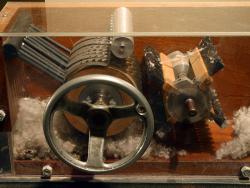
This Creative Development Which Was Responsible For The Survival Of The Cotton Industry In The United States Occurred In General Nathaniel Greene's Plantation Near Savannah 10 Miles Northeast Of This Marker. Separation By Hand Labor Of The Lint From The Seed Of The Desired Upland Variety…
Read More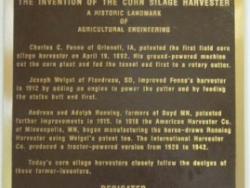
Charles C. Fenno Of Grinnell, Ia, Patented The First Field Corn Silage Harvester On April 19, 1892. His Ground-Powered Machine Cut The Corn Plant And Fed The Tassel End First To A Rotary Cutter. Joseph Weigel Of Flandreau, Sd, Improved Fenno's Harvester In 1912 By Adding An Engine To…
Read More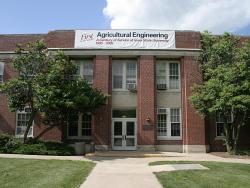
Designated an Historic Landmark in Honor of J. Brownlee Davidson a Founder of Agricultural Engineering First President of American Society of Agricultural Engineers Organizer of the First Professional Agricultural Engineering Curriculum July 1905 by American Society of Agricultural…
Read More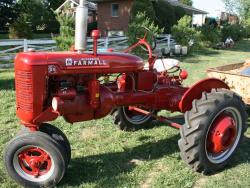
The First Successful Row Crop Tractor Invented by Bert R. Benjamin (ASAE Member) was Operated and Tested on this Farm in 1923. Increased Row Crop Clearance and Overall Versatility Extending the Use of the Tractor to Cultivating, Accelerated the Conversion from Animal Power to Machine…
Read More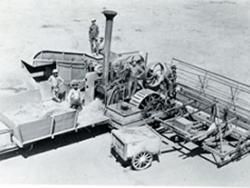
George Stockton Berry (1847-1917) of Lindsay, Tulare County, California designed, built, and in 1886, operated the first self-propelled combine. He was granted a U.S. Patent (# 374,339) in1887. The Berry design embodied the following "firsts":
1. Self-propelled combine.
2. Combine…
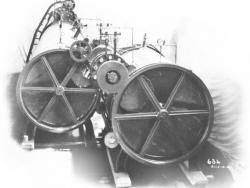
The Food Canning Industry Was Revolutionized In 1920, When The Continuous Rotary Pressure Sterilizer Was Introduced By Albert R. Thompson. Thompson Was Chief Engineer For The Anderson-Barngrover Co. Of San Jose, California, Now The FMC Corporation. The Sterilizer Cooked Canned Products…
Read More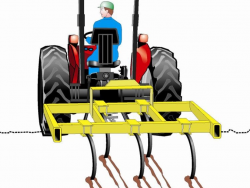
Preventing Wind Erosion Was The Primary Objective Of Fred Hoeme, a Hooker, Oklahoma Farmer, When He Developed A Heavy-Duty Chisel Plow In 1933. Hoeme And His Sons Manufactured And Sold About 2000 Plows From Their Farmstead. In 1938, W. T. Graham Purchased The Manufacturing And…
Read More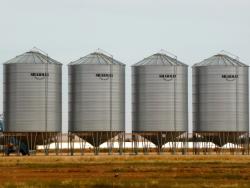
Tests Of Grain Aeration To Cool And Dry Combine-Harvested Wheat By F. L. Fenton, C. O. Swanson, And Orval C. French At Kansas State University In 1930-31 Showed Mechanical Ventilation To Be More Effective Than Natural Draft Ventilation. Mechanical Aeration Was Further Developed In The…
Read More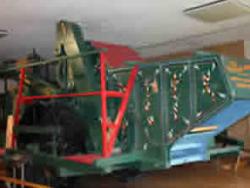
The Sidehill Combine Developed By The Holt Brothers At Stockton, California In 1891, A Significant Milestone In Grain Harvesting And Agricultural Efficiency That Opened New Land For Wheat Farming, Is Designated A Historic Landmark Of Agricultural Engineering By The American Society Of…
Read More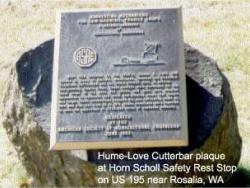
Near This Location In The 1930's James E. Love And Horace D. Hume Of Garfield, Washington, Invented The Flexible Floating Cutterbar And The Tined Pickup Reel To Harvest Low-Growing, Fragile Crops. These Devices Were Developed For The Local Crops Of Dry Peas And Lentils And Were Then…
Read More

